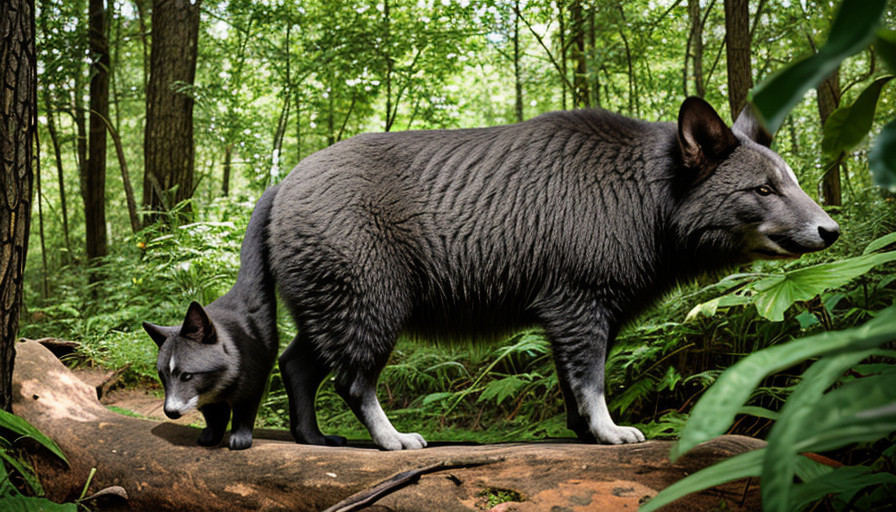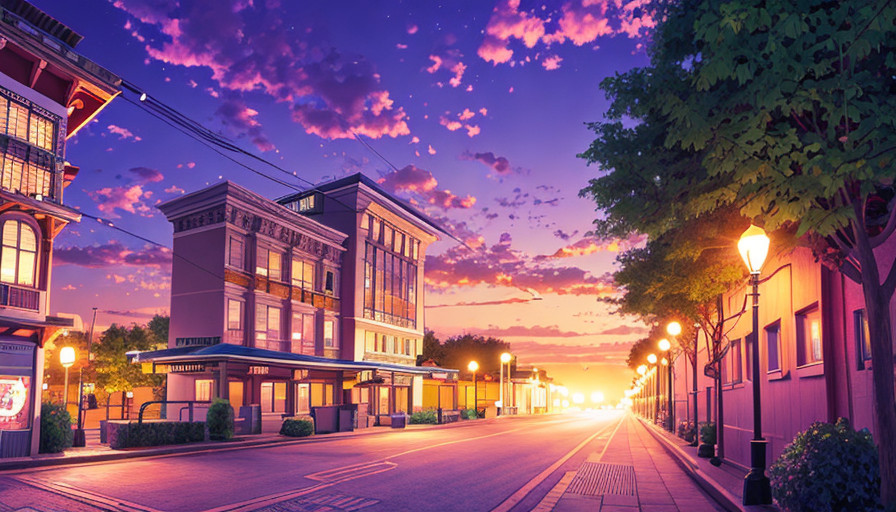Animation has become one of the most prevalent and engaging forms of media in modern society. Its widespread application ranges from traditional hand-drawn animation in movies to 3D computer-generated imagery (CGI) in video games, advertising, marketing campaigns and educational materials.
It is challenging to find a form of media today that does not incorporate some element of animation. This article will delve into the definition and brief history of animation and explore its importance in modern media.
Definition of Animation
Animation can be defined as the creation of moving images through a series of individual pictures or frames that are sequenced together to produce an illusion of motion. It involves bringing static images or objects to life, imbuing them with movement, personality, and character, often giving them a sense of realism that draws viewers in.
Brief history of Animation
The earliest examples of animation were created by the ancient Greeks who used a spinning wheel or a zoetrope – a cylinder with vertical slits – to create the illusion of movement from static images. The first hand-drawn animated cartoon was created in 1908 by Emile Cohl, called Fantasmagorie.
Walt Disney was one person who revolutionized animation by creating fully synchronized sound cartoons with his creation “Steamboat Willie.” This became an instant hit among audiences worldwide and led to Disney’s dominance as one of the premier entertainment companies in both film and TV industries.
Importance of Animation in modern media
Animation has become an integral part not only for entertainment but also for education, advertising, marketing campaigns and training purposes. In film production, animation can be used effectively to create visually stunning scenes such as those seen in blockbuster movies like Lion King (1994), Toy Story (1995), The Incredibles (2004) and Frozen (2013).
Animation has also become a popular tool in education, with teachers using it to explain difficult concepts like cell division, human anatomy and astronomy. In the advertising industry, animation is used to grab the viewer’s attention and convey a message more effectively.
It is often used to create memorable characters or mascots seen in commercials such as Tony the Tiger (Kellogg’s Frosties), Ronald McDonald (McDonald’s), and Kool-Aid Man (Kool-Aid). Animation has transformed from being just mere entertainment into an essential component of modern media.
Its application ranges from traditional hand-drawn animation to cutting-edge 3D computer-generated imagery, stop-motion animation and motion graphics. Animation has become an important medium for companies and institutions alike as they seek new ways to engage with their audience effectively.
Types of Animation
Animation is a diverse art form that comes in many different styles. These styles can range from traditional hand-drawn animation to computer-generated imagery (CGI) and beyond. Each style has its own unique strengths and weaknesses, and as such, they are often used for different purposes.
Traditional Animation (Hand-Drawn)
Traditional animation, also known as hand-drawn animation, is the oldest form of animation. It involves drawing each frame of an animated sequence by hand on a transparent piece of plastic called a cel. The cel is then placed over a background image and photographed one frame at a time to create the illusion of motion.

This style of animation has been used for decades in classic Disney movies like Snow White and the Seven Dwarfs, Sleeping Beauty, and The Little Mermaid. While traditional animation is no longer commonly used for feature-length films, it still has its place in modern media with short films, commercials, and TV shows like South Park.
2D Vector-Based Animation
Vector-based 2D animation uses mathematical equations to create images that can be scaled infinitely without losing quality. This type of animation is often used for web-based animations that need to load quickly or apps where space is at a premium.
The advantage of vector-based 2D animation over traditional hand-drawn animation is that it requires less memory so it can be played back smoothly with less powerful hardware than other forms of animations. Adobe Flash was once the dominant platform for creating vector-based animations until HTML5 became more capable.
3D Computer-Generated Imagery (CGI)
Computer-generated imagery (CGI) uses 3D modeling software to create lifelike objects and environments which are then animated. This technique is used in feature films, TV shows and video games to create realistic characters and immersive worlds.
CGI animation has become increasingly prominent in recent years, especially in Hollywood blockbusters like The Lion King (2019), Toy Story, and Avatar. The advantages of CGI animation over other forms include the ability to create complex scenes that would be challenging or impossible to replicate using traditional methods.
Stop-Motion Animation
Stop-motion animation involves capturing real-world objects one frame at a time by moving them incrementally between each shot. This technique is often used for animated shorts, commercials, music videos and TV shows like Pingu.
There are two main types of stop-motion animation: puppet-based stop-motion, which involves animating dolls or puppets; and claymation or plasticine-based stop-motion where the animator shapes figures from clay or plasticine that are then photographed. Stop motion requires patience and skill but can produce some incredible results when done well.
Motion Graphics
Motion graphics are digital animations that combine graphic design with audio to create visually engaging content for a variety of mediums such as social media posts, explainer videos ,and title sequences in movies. It uses text, images, shapes and colors along with various transitions effects to tell an engaging story using moving visual elements..
The use of motion graphics has exploded with the rise of social media marketing where businesses use them to promote their brands online because they offer great engagement potential due their eye-catching nature on the feeds.
Each type of animation has its own unique style and strengths that make it suitable for different purposes. From traditional hand-drawn animation to computer-generated imagery (CGI), stop-motion and everything in between—animators have a lot of tools at their disposal when it comes to creating engaging content.
Techniques Used in Animation
Keyframe animation
Keyframe animation is a technique used to create movement by setting key points at specific intervals. The animator creates the beginning and ending poses of an object or character, and the computer fills in the rest of the movement based on interpolation. This technique is commonly used in both 2D and 3D animation.
Tweening animation
Also known as “in-betweening”, this technique fills in the frames between two keyframes to create smoother, more fluid motion. Tweening can be done manually or with software that automates the process.
Rotoscoping
Rotoscoping involves tracing over live-action footage frame-by-frame to create an animated version of it. This technique has been used extensively in films, such as Ralph Bakshi’s 1978 cult classic “Lord of the Rings.”
Motion Capture
Motion capture, also known as mocap, involves recording a live actor’s movements and translating them into digital animation. This technology has been used extensively in film, television, and video games.

Applications of Animation
Film and Television
Animation has been a staple of film and television for decades. From traditional hand-drawn animations like Disney classics to modern computer-generated graphics like Pixar films, animation continues to captivate audiences around the world.
Advertising and Marketing
Animation is commonly used in advertising to visually convey complex ideas or products. Animated advertisements are often entertaining and memorable which helps audiences remember specific products or brands.
Video Games
Animation plays a crucial role in creating immersive environments within video games. Animators must carefully consider how characters move within their virtual surroundings while ensuring their movements are realistic while still being responsive to user input.
Education and Training
Animation can be a powerful tool for educators and trainers. It can help visualize complex topics like scientific concepts or historical events, making them more accessible to audiences of all ages.
The Future of Animation
Advancements in Technology
In recent years, advancements in technology have drastically improved the animation process. From rendering software to motion capture, the newest technology has made it possible for animators to create higher quality productions.
Virtual Reality and Augmented Reality
Virtual and augmented reality technologies are becoming increasingly popular in many industries. Animation is no exception, with these technologies providing new opportunities for immersive storytelling.
Artificial Intelligence
Artificial intelligence has the potential to revolutionize the animation process by automating certain tasks such as frame interpolation or even character animation. AI could also improve facial recognition within animated characters creating more realistic-looking characters overall.
2. What are the Different Types of Animation?
Animation can be divided into two main categories: traditional animation and computer-generated animation. Traditional animation is created by hand-drawing or painting individual frames, which are then combined to create the illusion of motion. Computer-generated animation, also known as CGI, is created using computer software and hardware.
3. What are the Key Elements of Effective Animation?
The key elements of effective animation are timing, composition, story, and character. Timing refers to the speed and rhythm of the animation, and how it is used to create the illusion of movement. Composition is the arrangement of visual elements in the animation, and how they are used to create a sense of harmony and balance.

Story is the narrative structure of the animation, and how it is used to engage the audience. Character is the personality and characteristics of the characters in the animation, and how they are used to create a connection with the audience.
4. How Can You Create Engaging and Relatable Characters in Animation?
Creating engaging and relatable characters in animation requires a combination of writing and visual design. The characters should have a unique personality and characteristics that make them stand out from other characters.
They should also have flaws and weaknesses that make them relatable to the audience. Visual design is also important, as the characters should be designed to be visually appealing and memorable.
5. How Can You Use Movement and Gesture to Convey Emotion and Mood in Animation?
Movement and gesture are important tools for conveying emotion and mood in animation. Animators can use subtle movements and gestures to convey a character’s feelings and intentions. They can also use exaggerated movements and gestures to create a more dramatic effect. Animators should also consider the timing of the movements and gestures, as this can help to create a sense of tension or suspense.
6. How Can You Use Sound and Music to Enhance the Impact of Animation?
Sound and music can be used to enhance the impact of animation. Music can be used to create a mood or atmosphere, and can be used to add tension or suspense. Sound effects can be used to bring scenes to life, and can be used to add realism or humor to a scene. Finally, voice acting can be used to give characters a unique personality and to help the audience connect with the characters.
7. How Can You Use Animation to Convey a Specific Message or Theme?
Animation can be used to convey a specific message or theme. Animators should consider the story they are telling, the characters they are creating, and the visuals they are using. They can use symbolism, metaphors, and other literary devices to convey a message or theme. They can also use color, lighting, and other visual elements to emphasize the message or theme.
8. What are Common Mistakes to Avoid in Animation?
Some common mistakes to avoid in animation are using too much motion, not paying attention to the timing of movements, using too many effects, and not using sound or music effectively. Animators should also be aware of the common pitfalls of character design, such as making characters look too similar or making them too cartoony. Finally, animators should be aware of the legal implications of using copyrighted material in their animations.
9. How Can You Ensure That Your Animation is Visually Appealing and Engaging?
To ensure that your animation is visually appealing and engaging, animators should consider the composition of their scenes, the use of color and lighting, and the use of sound and music. Animators should also pay attention to the timing of their movements and gestures, and use subtle movements to convey emotion and mood. Finally, animators should create characters that are unique and relatable to the audience.
10. How Can You Use Animation to Tell a Compelling and Impactful Story?
To tell a compelling and impactful story using animation, animators should focus on the narrative structure, the characters, and the visuals. They should create a story that has a beginning, middle, and end, and use characters that are relatable and memorable. They should also use visuals that are visually appealing and emotionally engaging. Finally, animators should use sound and music to enhance the impact of their animation.
Conclusion
Animation is a versatile medium that has been used across multiple industries and applications. The advances in technology have brought about exciting changes in how animations are created, from traditional hand-drawn methods to sophisticated 3D techniques.
As we continue forward with new advancements such as VR/AR and artificial intelligence, the future of animation looks bright with endless possibilities yet to come! You should read another article i wrote about >>>> Film vs Digital Movies: Pros and Cons, Differences, and Examples to learn more.

I am a highly experienced film and media person who has a great deal to offer to like-minded individuals. Currently working on several exciting projects, I am a film and media practitioner for over a decade. I have achieved a great deal of success in my professional career.


Comments are closed